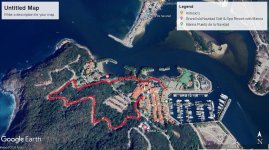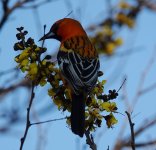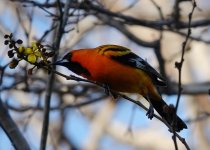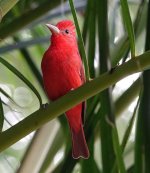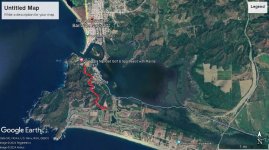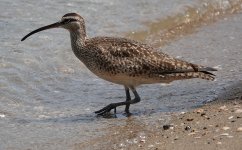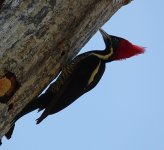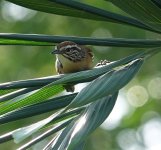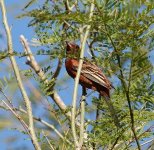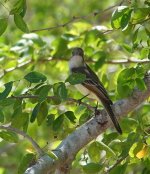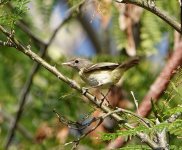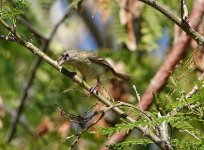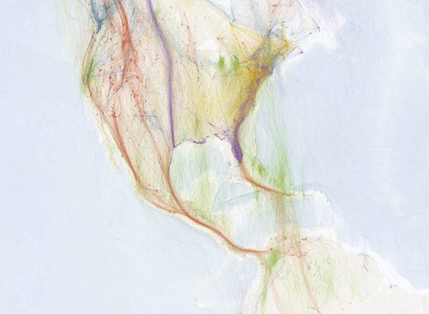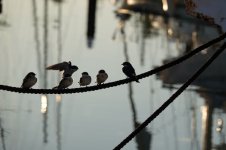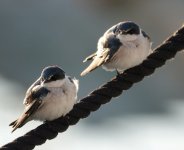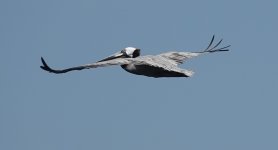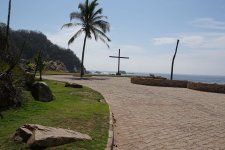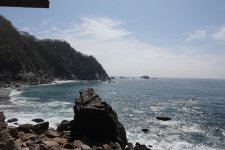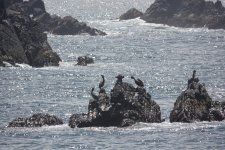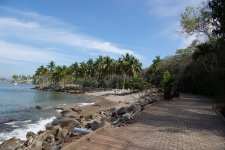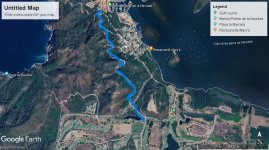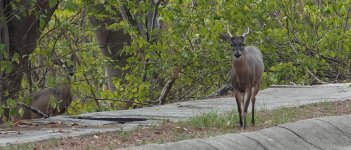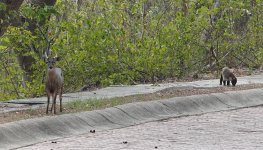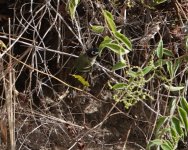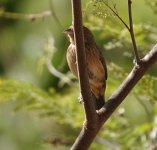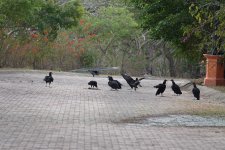SueO
Well-known member
Arrived in Barra de Navidad yesterday for a two week stay aboard our sailboat, Peregrine. Barra is at 19 degrees 11.734 N and 104 degrees 40.954 W
Woke this morning to some very vocal Osprey. Funny how such powerful birds can have such pip-squeaky voices. As I was going up the steps to pop my head out, another loud call hit my ears; Ringed Kingfisher churring in an agitated manner. I came up just in time to see him fly into one of the trees surrounding the marina. A flock of Gray-breasted martins flew in from the large lagoon that is outside the marina and descended on the masts of most of the boats in the marina, including Peregrine's. A Mangrove swallow landed on the piling right next to me, and immediately took off when he saw me. Barn swallows flew around the buildings of the Grand Isla Navidad Resort which is next to the marina. A Eurasian Collared Dove launched from the top of a mast a few boats over--kind of weird--can't say I've ever seen a dove perched on the mast or rigging of yachts before. Looking for nesting site? The Kingfisher became a pair and drowned out the calls of everything else as they flew together. They split up and one made a flight over the marina seemingly chewing out every other being here, and the other flew into the same tree as it did earlier. Nearly spring and the birds are active. The familiar call of a Golden-cheeked Woodpecker rang out about the same time as a pair of Great Kiskadees called. I'm so happy to be somewhere where the sounds of Mother Nature smack you upside the head! I retreated down the hatch to make my coffee. Have some cleaning to do before I can do an early morning walk. Manana!
Woke this morning to some very vocal Osprey. Funny how such powerful birds can have such pip-squeaky voices. As I was going up the steps to pop my head out, another loud call hit my ears; Ringed Kingfisher churring in an agitated manner. I came up just in time to see him fly into one of the trees surrounding the marina. A flock of Gray-breasted martins flew in from the large lagoon that is outside the marina and descended on the masts of most of the boats in the marina, including Peregrine's. A Mangrove swallow landed on the piling right next to me, and immediately took off when he saw me. Barn swallows flew around the buildings of the Grand Isla Navidad Resort which is next to the marina. A Eurasian Collared Dove launched from the top of a mast a few boats over--kind of weird--can't say I've ever seen a dove perched on the mast or rigging of yachts before. Looking for nesting site? The Kingfisher became a pair and drowned out the calls of everything else as they flew together. They split up and one made a flight over the marina seemingly chewing out every other being here, and the other flew into the same tree as it did earlier. Nearly spring and the birds are active. The familiar call of a Golden-cheeked Woodpecker rang out about the same time as a pair of Great Kiskadees called. I'm so happy to be somewhere where the sounds of Mother Nature smack you upside the head! I retreated down the hatch to make my coffee. Have some cleaning to do before I can do an early morning walk. Manana!






